Future-Proofing Your Career: Highlighting Upskilling and Continuous Learning on Your Resume

As Seen In:


Landing your dream job these days takes more than just experience – it’s about showing hiring managers that you’re growing with the times. In an ever-evolving landscape, the most successful professionals are the ones who stay curious and committed to learning. As job roles and expectations continue to shift, upskilling has become a must – not just for staying relevant, but for opening new doors and showing you’re ready for what’s next.
Whether you’ve taken a course, earned a certification, or sharpened a new tool or technique, these efforts are all part of employee development – and they send a clear message: you’re motivated, adaptable, and focused on growth. And your professional resume should reflect that. It’s not just a timeline of your past roles; it’s a chance to highlight your key skills and your proactive approach to staying ahead in your field.
In this blog, we’ll explore why upskilling matters, how to take an intentional approach to your learning, and how to showcase your development in a way that helps you stand out to hiring managers.
Key Takeaways
Upskilling is essential to career growth. Showcasing continuous learning on your resume highlights your adaptability, motivation, and readiness for what’s next – especially in an ever-evolving job market.
Strategic placement matters. Feature your certifications, learning platforms, and transferable skills throughout your resume – especially in your summary, skills section, experience descriptions, and a dedicated professional development area.
Use keywords and results to stand out. Optimize your resume for ATS by using industry terms, specific course titles, and measurable outcomes that align with the job description and demonstrate your professional achievements.
How Does Upskilling and Lifelong Learning Future-Proof Your Career?
Staying ahead in your career (or even just standing out in your current role!) requires more than just experience, it takes a proactive commitment to growth. As industries evolve rapidly due to advances in technology, the skills that were once considered essential are constantly being redefined.
The Major Trends Driving this Future-Forward Transformation:
🤖 Automation and AI are reshaping job requirements across nearly every industry.
👩💻 The rise of remote work and digital collaboration tools has accelerated demand for new technical skills.
📈 Increased employer value around adaptable and growth-focused candidates.
📲 The dynamic nature of modern work requires regular skill updates just to keep pace.
👥 Many traditional roles are being replaced, while entirely new ones are emerging thanks to innovation.
Upskilling empowers you to keep your professional experience relevant while aligning your abilities with emerging trends. It helps you become a more valuable asset in a competitive landscape and ensures that your key skills support your long-term career goals. Rather than reacting to change, you’re actively preparing for it.
The financial benefits of continuous learning are just as compelling. Often professionals who invest in upskilling earn more than those who don’t. So it’s not just about keeping your job – it’s about expanding your opportunities and income potential.
And according to the LinkedIn Workplace Learning Report,
“AI will be a paradigm shift for the world of work by both democratizing and individualizing learning and reaffirming employee growth as the ultimate goal.”
In short, lifelong learning and upskilling are how you stay not just employed – but empowered and ahead.
How Can You Start Upskilling?
If you’re ready to start upskilling, the good news is that you don’t need to overhaul your entire schedule or budget. With a few intentional steps, you can begin building the knowledge and transferable skills that help you stay agile, confident, and career-ready – no matter how the job market evolves. Here are the first steps to help you get started:
1. Identify the relevant skills you need for where you’re headed: Take a close look at roles you’re interested in or industries you’re exploring. Are there recurring technical tools, certifications, or soft skills listed? These clues can help you identify skills that will move your career forward.
✨Tip: Need a little guidance? Check out our blog that outlines the best skills to add to your resume to stand out in the job market!
2. Focus on Future-Friendly, Transferable Skills: Skills like communication, adaptability, time management, and problem solving skills remain valuable across roles and industries. These are especially important when future proofing your career against changes driven by automation and technological advancements.
3. Take Advantage of Flexible Learning Platforms: You don’t have to go back to school to keep learning. There are tons of accessible options to build new skills at your own pace:
Coursera – Offers courses from top universities and companies.
LinkedIn Learning – Great for business, creative, and tech skills.
Google Career Certificates – Focused on practical job-ready skills.
Skillshare – Excellent for creative and entrepreneurial learners.
HubSpot Academy – Ideal for marketing, sales, and customer success.
✨Tip: Many of these platforms offer free options and certifications that can act as great resume builders!
4. Set Small, Achievable Goals: Don’t try to do everything at once. Try setting a goal to complete one course a month or block out 30 minutes a week for learning. Consistency matters more than intensity.
5. Put Your Skills into Action: The best way to retain what you learn? Use it! Whether it’s volunteering for a new project at work or freelancing on the side, applying your new skills reinforces your growth and makes them easier to highlight during interviews or on your resume.
6. Track Your Progress and Update Your Resume Regularly: As you build new skills, be sure to add them to your resume under a dedicated section like Certifications, Professional Development, or Technical Skills. This keeps your experience fresh and relevant in a competitive job market.
How to Showcase Upskilling on Your Resume (the Right Way!)
You’ve taken the initiative to grow your skills – now it’s time to make sure that growth shows up on your resume in a way that resonates with hiring managers.
Whether you’ve completed a professional course, earned a certification, or taught yourself a new platform, continuous learning is a clear signal that you’re invested in your career. But here’s the key: it’s not enough just to list what you’ve learned. You need to show how those new skills have driven results!
For layout guidance and inspiration, we suggest you take a look at our blog that outlines how to write a marketing resume – which breaks down every part of a modern resume template. You can also explore our resume samples or simply get in touch with one of our professional resume writers for personalized support.
🔸 Start at the Top: Your Professional Summary
Your resume summary is the first place hiring managers look. Take this section as the perfect opportunity to highlight your commitment to growth.
Be sure to…
• Mention recent certifications or formal training.
• Highlight learning platforms (Coursera, Udemy, LinkedIn Learning, etc.)
• Quantify your progress when you can (number of courses, hours completed, etc.)
• Emphasize soft and hard skills gained.
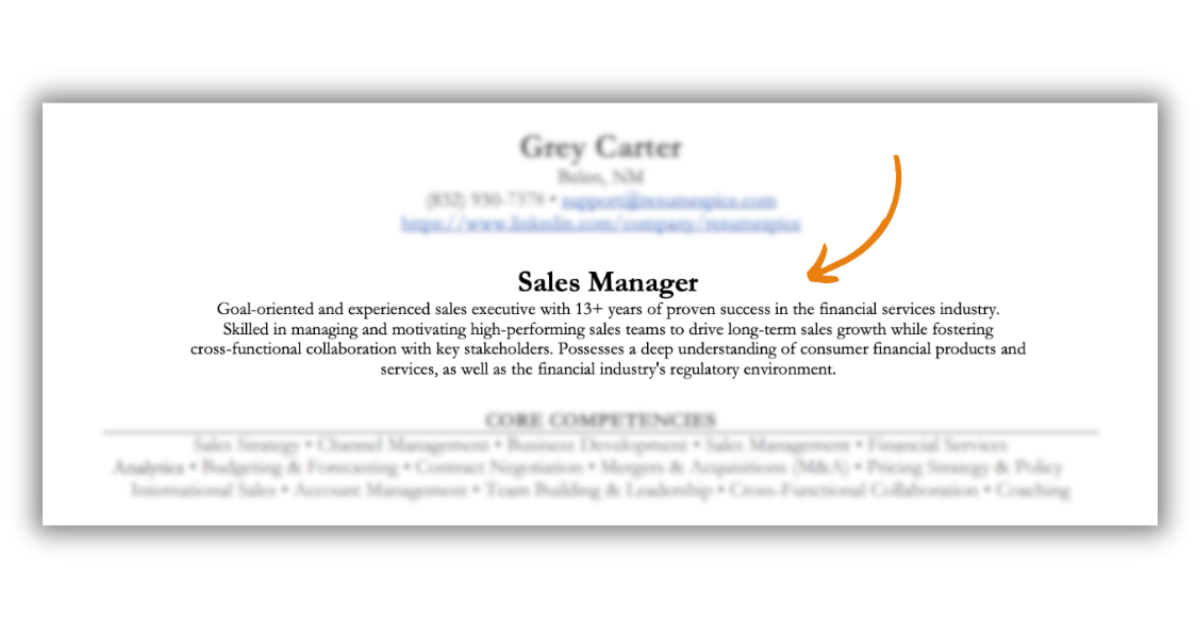
🔸 Strengthen Your Core Competencies and Skills Section
Hiring managers want to know what you can bring to the table. Keep your skills section fresh and aligned with the roles you’re applying for.
Ensure Your Skill Section…
• Combines soft and hard skills.
• Uses the specific names of software versions and tools.
• Calls out skills you’re currently learning.
• Uses terms from the job description to match keywords.
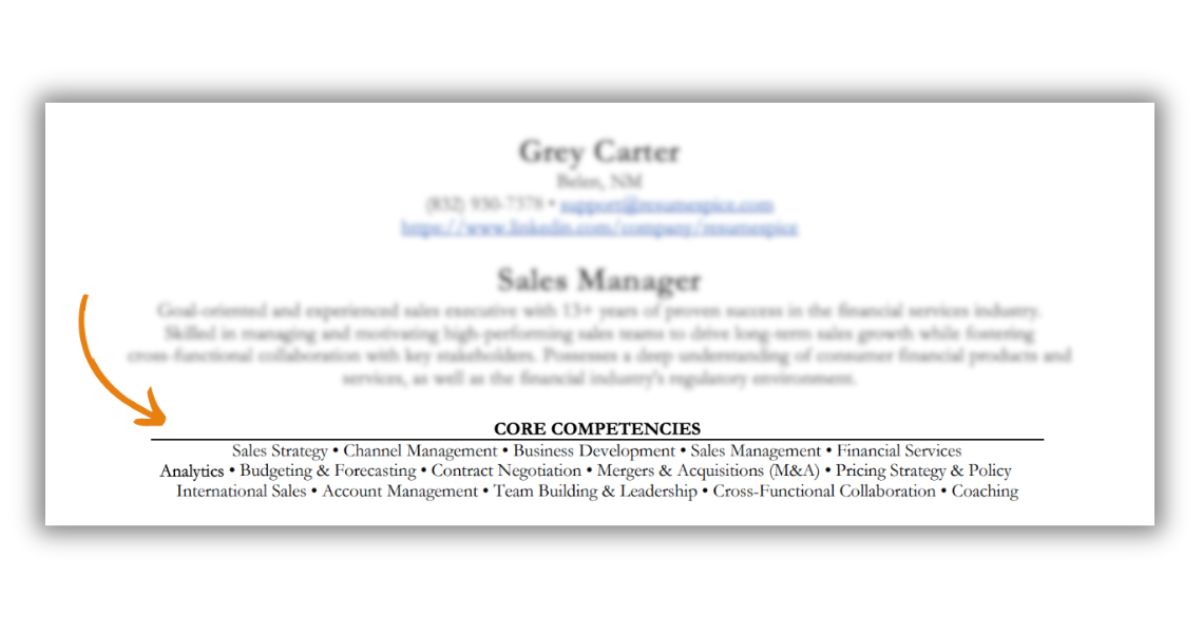
🔸 Add a Dedicated “Certifications” or “Professional Development” Section
Creating a separate section on your resume helps make your learning efforts easy to find and scan.
What to include in Your Resume Certification Section:
• Certification name
• Issuing organization
• Completion or expiration date (if applicable)
• Credential IDs (optional)
• Notable coursework or topics covered
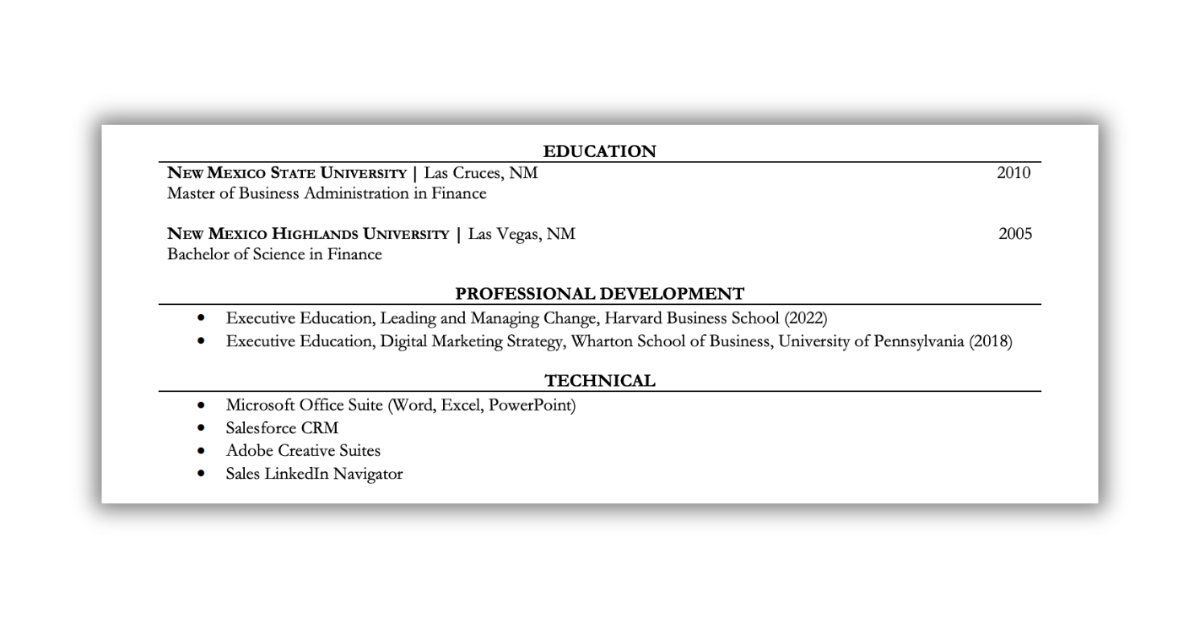
🔸 Connect Learning to Results in Your Work Experience
Where your upskilling really shines is in how it’s applied. Don’t just say you learned something – show what it helped you accomplish.
Examples:
• Used CRM automation training to streamline lead tracking, contributing to a 15% increase in closed deals.
• Applied UX design skills to optimize site layout, resulting in a 22% increase in session duration
• Implemented Excel automation learned through LinkedIn Learning, saving 5+ hours per month on manual reports.
• Led collaboration workshops after completing a course on remote communication.
👉 Remember: Use numbers to prove your impact – percentages, time saved, or improved performance metrics help hiring managers see the value at a glance.
Upskilling tells employers you’re not just keeping up – you’re actively moving forward. When you strategically highlight your learning and connect it to results, your resume becomes more than a summary of your past. It becomes a story about where you’re headed next.
Want help showcasing your skills the right way? Our team at ResumeSpice is here to support your growth with expert resume writing, career coaching, and customized application support.
Using ATS-Friendly Learning Keywords to Highlight Skills and Certifications in Your Resume
Before your resume ever reaches a hiring manager, it typically goes through an Applicant Tracking System (ATS) – a digital gatekeeper that scans for keywords to determine whether your experience matches the job description.
If you’ve invested in upskilling, make sure those efforts are formatted and phrased in a way that helps—not hurts—your chances of getting noticed.
How to Optimize Your Skills and Certifications for ATS and Recruiters:
Include the exact course names and certification titles as they appear on your credentials.
Use industry-standard terms for software, tools, and technologies.
Add learning-related action verbs: completed, earned, achieved, mastered, certified.
Quantify your growth with metrics and timeframes (e.g., “Completed 25 hours of Google Ads training in Q1”).
Use both acronyms and full names for certifications (e.g., PMP (Project Management Professional)).
Mirror keywords from the job posting in your Skills and Experience sections.
📌Tip: Want to go the extra mile? Reinforce your upskilling in your cover letter by connecting it to your goals for career advancement. Framing your certifications and continued learning as part of your larger growth story helps employers connect the dots between your professional achievements and your potential.
Common Mistakes to Avoid When Incorporating Skills and Certifications into Your Resume
Even the most impressive learning achievements can lose impact if presented ineffectively on your resume. Avoid these common pitfalls when incorporating skills and certifications into your resume:
⛔️ Listing Outdated Certifications Without Renewal Dates
Include only current certifications or clearly mark renewal dates for time-limited credentials. For older but relevant certifications, note any refresher courses or continuing education completed.
⛔️ Including Too Many Irrelevant Courses
Curate your learning achievements based on the target role. For most resumes, include 5-8 most relevant certifications directly related to your target position.
⛔️ Failing to Connect Learning to Results
For each significant learning achievement, include at least one example of practical application or resulting improvement in your work.
⛔️ Using Vague Language
Replace general phrases like “various courses” with specific program names, platforms, and measurable outcomes.
⛔️ Creating Resume and LinkedIn Mismatches
Ensure your LinkedIn profile reflects the same learning achievements as your resume to avoid creating confusion or raising questions during background checks.
⛔️ Overwhelming With Excessive Detail
Use a condensed format with certification name, issuing organization, and year to maintain clarity while preserving space for other resume elements.
🌟 Remember: Sometimes job seekers can struggle with self-doubt when highlighting their learning achievements, particularly when changing careers or entering a new industry. Remember that your commitment to continuous learning is itself a valuable asset that demonstrates key qualities employers seek: adaptability, proactivity, and commitment to excellence!
Summary
Future-proofing your career through upskilling isn’t a one-time event – it’s a rewarding journey that evolves with industry trends and your career aspirations.
In a competitive professional landscape, your commitment to continuous learning isn’t just a personal development strategy – it’s a powerful message to potential employers about your adaptability, resilience, and forward-thinking mindset. By strategically highlighting your upskilling efforts on your resume, you transform a simple document into compelling evidence of your readiness to thrive in an ever-evolving professional environment.
The most successful professionals don’t just react to change – they anticipate it through continuous learning and position themselves to seize opportunities in the changing professional world. Your perfect resume should reflect not just who you’ve been professionally, but who you’re becoming through your investment in ongoing education and skill development.
Q&A
Q: How many certifications should I include on my resume?
A: Include 5-8 most relevant certifications that directly relate to your target role. Prioritize recent certifications from the past 2-3 years, and focus on industry-recognized credentials over internal company training. For roles requiring specialized knowledge, you might create a separate one-page addendum for extensive certifications.
Q: Should I include online courses that don’t offer certificates?
A: Yes, if they’re substantial and relevant. Include significant coursework even without formal certification if it’s relevant to the role, especially when the learning involves acquiring skills listed in the job description. Focus on courses that resulted in practical skills application and consider creating a separate “Professional Development” section for non-certified learning.
Q: How do I show ongoing learning without making my resume too long?
A: Use a condensed format with certification name, issuing organization, and year. Group related certifications under broader categories to save space. For example, instead of listing five separate digital marketing courses, you might write: “Digital Marketing Specialization – Completed 5 courses covering SEO, content marketing, social media strategy, PPC, and analytics (HubSpot Academy, 2023-2024).”
Q: What’s the best way to format learning achievements for ATS systems?
A: Use standard section headers like “Certifications,” “Professional Development,” or “Education” rather than creative alternatives that ATS systems might not recognize. Include exact certification names and issuing organizations as they appear on credentials. Use consistent date formats (MM/YYYY) throughout your resume and avoid graphics, tables, or unusual formatting that ATS systems cannot parse.
Q: How can I highlight continuous learning if I have no formal certifications?
A: Focus on self-directed learning and practical application. Document time spent on professional reading, attending workshops, participating in webinars, or contributing to relevant projects. Quantify this informal learning with specific metrics: Dedicated 5 hours weekly to professional development through industry webinars, resulting in implementation of three new social media engagement strategies that increased follower growth by 45%.
Ready to Update Your Resume? We are Here to Help!
Our ResumeSpice team is comprised of actual recruiters who know the ins and outs across key industries, and have top-tier knowledge on how to spotlight candidates in today’s competitive job market. Additionally, our array of #1 ranked resume writing services are made possible by our experienced, always in-house resume writers. We are proud to have helped thousands of sales professionals land their dream jobs, and are prepared to help you next! Our team is here to provide tailored resume writing, help you navigate best practices, provide career guidance, interview prep, and more. Check out all of our career services here. You can also call us at 832.930.7378 or connect with us online.










